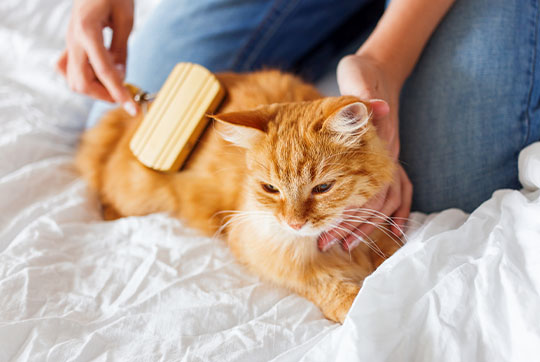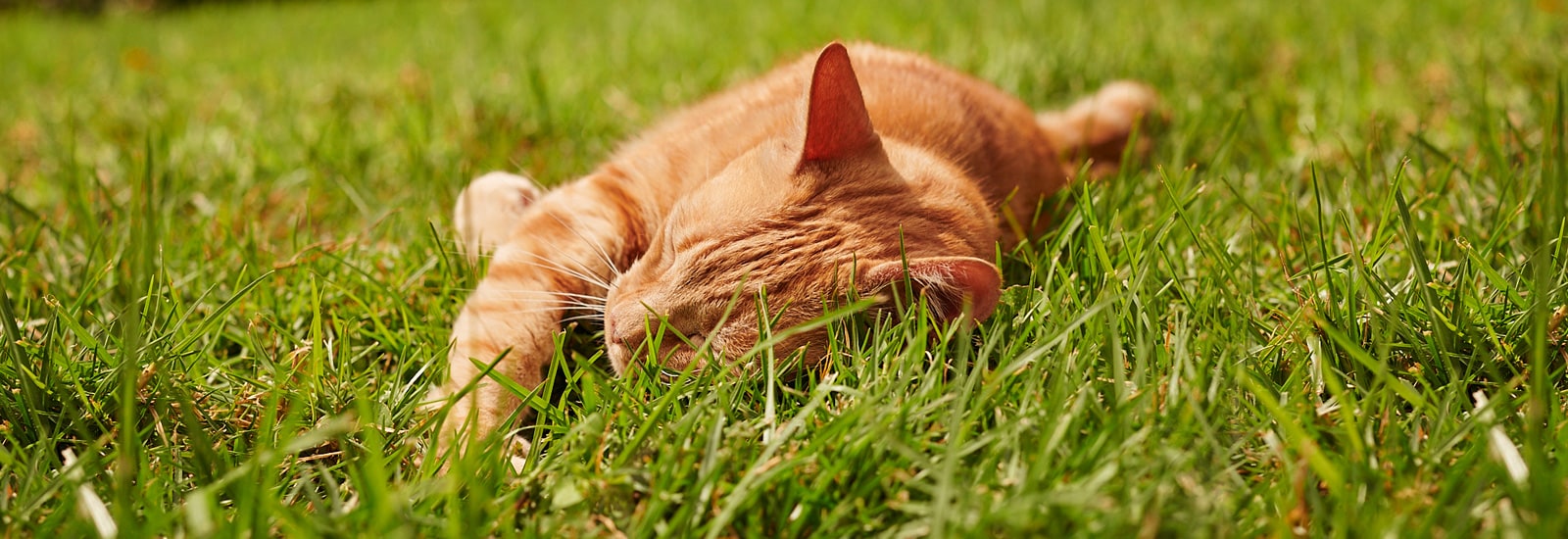Cats moult twice a year. During this process, cat owners should provide their pet with support.
Moulting in cats
What purpose does moulting serve?
When it is cold outside, we put on a warm jacket. If, on the other hand, temperatures are over 30 degrees, we are happy to be able to take off any item of clothing we can. It is no different for our cats: In autumn they cast off their thin summer coat and put on a winter coat. And when the winter slowly comes to an end, the moulting process begins again and they lose their winter coat. This is a difficult time for every cat owner, because thousands of cat hairs are spread around the home.
Do all cats moult?
Moulting does not take place to the same extent in every cat. Cats that live in the wild or are often outdoors have a much more pronounced moulting process than indoor cats. Two factors affect the intensity of moulting. The start of the moulting process is influenced by the length of daylight. While oudoor cats experience the daylight on a regular basis, house cats are only partially aware of the length of the day, because the light is switched on as soon as it gets dark outside. The second trigger for moulting is the outside temperature. For indoor cats, this hardly plays a role, except when they occasionally make trips to the balcony. When they are too cold, they quickly move back into the warm. Cats who regularly enjoy extended walks through their territory, on the other hand, will directly experience both cold and hot temperatures and react to this by adapting their fur. They are generally the most subject to fur changes, while many indoor cats moult almost all year round and only display a slight increase in fur loss in spring and autumn.

How does the moulting process work?
In autumn the fur becomes thicker and longer to protect the cat from the cold, while in spring the outer coat becomes shorter and the cat loses its thick woolly fur. The cat’s moulting process takes about 6-8 weeks.
Every time a cat moults, space has to be created for the new fur growth, which is why the old fur falls out. A new hair root then forms in its place, and the fur grows and is supplied with nutrients. Once it has reached a certain length, it stops growing. This is followed by a transition stage and the so-called resting phase, in which the hair no longer receives any nutrients, but is still firmly attached. Gradually it dies off and eventually falls out, allowing the cycle to start anew.
Dangers during moulting in cats
Usually the moulting process is completely automatic. However, this is not always the case! Long-haired cats, in particular, run the risk of swallowing too much hair when they clean themselves, which can cause gastritis or even bowel obstruction. To keep this risk under control, many cats regularly regurgitate undigested hairballs..

Supporting cats when moulting
It is well known that cats spend a great deal of time grooming. While licking their fur, they not only clean it, but fine barbs on the tongue ensure that loose hair is removed and remains stuck there. This is inevitably swallowed. To ensure that the amount is as low as possible, cats should always be supported in the grooming of their fur. This is especially true for long-haired indoor cats. Unlike cats who are allowed outside, they do not walk through tall grass or bushes causing them to lose a certain amount of fur. In addition, they do not generally have a higher number of individual hairs, but due to the length, they have a much greater mass of fur. This is why it is best to comb or brush long-haired cats daily.
Brushing a cat properly
Brushing should always be carried out in the direction of the fur growth. Brushing in the opposite direction may be unpleasant for the cat. The best way is to start with the cat’s head. Depending on the structure of the fur, it may be advisable to use different combs or brushes for optimal grooming of both the undercoat and the outer coat. Especially with fine fur, it is advisable to use combs or brushes that are not too spiky and have rounded tips. For short-haired cats there is also the option of just using a grooming glove. For long-haired cats, however, this is not sufficient: they should therefore get used to grooming by humans from an early age, so that this becomes a perfectly normal ritual.
No matter how much you help your cat with grooming, numerous cat hairs will be spread around your home, especially during the moulting process. Only regular vacuuming will help here. A special attachment with a rotating brush can be helpful, as it absorbs the hair from the floor more efficiently. High suction power is also an advantage. Many cat owners also use lint brushes, for example to remove animal hair from clothing. Lint rollers or the use of adhesive tape wrapped around the hand also help. In the end, one thing is needed above all: patience. Because in a few weeks the whole thing will be over.

